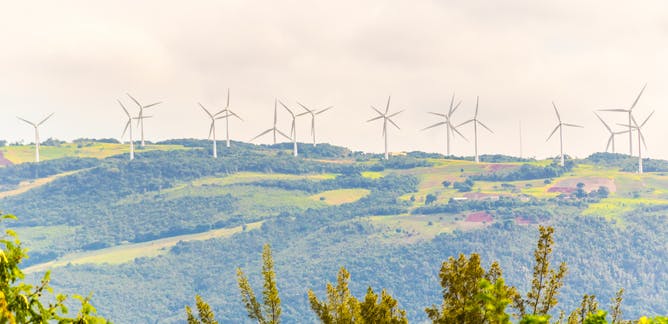
Four coal-fired power plants and three coal mines ring the Navajo Nation, a testament to the black rock’s complicated legacy on a sprawling reservation that occupies large swaths of high desert in Arizona, New Mexico and Utah.
The wave of retirements represents a watershed moment for the Navajo and a test case for America’s wider transition away from coal. Tribal leaders are increasingly looking to wind and solar to fill the gap left by the fossil fuel. Navajo renewable developers talk of a second chance to reap the riches of the energy industry.
Yet serious questions loom. Tribal officials are projecting up to $35 million in budget cuts in 2021, the result of closing a massive plant and coal mine later this year. It’s unclear just how many jobs that wind and solar can create to replace the more than a thousand tribal jobs in the coal industry.
Coal mined and burned on and near the Navajo reservation has helped power the growth of Phoenix, Los Angeles and Las Vegas—but some 15,000 tribal members remain without electricity today.

Like many coal communities across America, the Navajo are now being forced to reckon with a future without the fossil fuel. The Cholla Power Plant in Joseph City, Ariz., just south of the Navajo Nation, is scheduled to close in 2025.
The NGS closure represents a massive economic blow to the tribes. As recently as 2016, the plant and mine employed a combined 800 people, the vast majority of them Navajo and Hopi, and generated $150 million in annual taxes and wages.
Yet planning for life after their retirement has only just begun in earnest.
The Salt River Project, NGS’s operator, and three other utilities with a stake in the facility voted to close the hulking power station in 2017 for economic reasons (Climatewire, Feb. 14, 2017). The decision prompted a furious lobbying campaign from coal interests and the Trump administration to find a new buyer willing to operate NGS beyond 2019 (Climatewire, June 9, 2017).
The debate consumed federal, state and tribal officials for much of the last two years. NGS’s fate was sealed only last month, when Navajo lawmakers declined to back a bid by a tribal energy company to acquire the coal plant.



You must be logged in to post a comment.